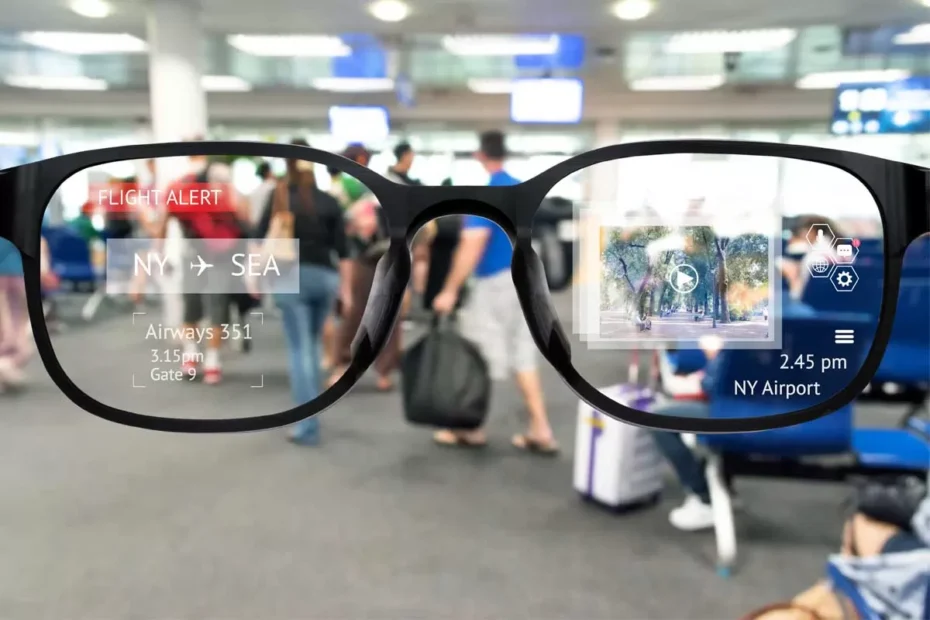Eyewear can be essential for our daily routines. If you need vision correction, glasses can help you see more clearly and improve your quality of life. They also serve as versatile fashion accessories, as they come in different sizes and designs to suit any preference. However, the eyewear industry always strives to innovate—which is why its newest offerings integrate various modern technologies like Big Data, artificial intelligence (AI), machine learning, and augmented reality (AR).
Thus far, this strategy has proven successful. Aside from catering to consumers with traditional eyewear needs, the industry has effectively sparked a rising demand for tech-powered products and services. As a result, researchers predict that the eyewear industry’s market value will skyrocket from $171 billion to $332 billion by the end of the decade.
So, what exactly are these modern advancements that are helping the eyewear industry grow? Here are a few of the biggest ones.
Enhanced online shopping experiences
E-commerce has been around for a while. With emerging technologies, though, retailers make the process even smoother and more personalized for consumers. Big Data and AI can now collect and analyze visitor information to present tailored product recommendations. Though brands like Eyebob get that data by asking you to take a quick style quiz, sites like GlassesUSA use more complex deep learning algorithms to adapt to each of its shoppers.
Modern retailers also use AR to further emulate the physical experience of buying these products. Eyebuydirect is one place where users can confidently buy glasses online because it offers virtual try-ons. This real-time feature uses a camera or an existing image to help find frames that fit their faces and suit their personal preferences. That means today’s consumers can easily and conveniently purchase eyewear remotely without worrying an ill-fitting item will be delivered to their doorsteps.
Remote eye exams
Many eyewear retailers, like Target Optical and LensCrafters, offer more than just glasses, sunglasses, and contact lenses—they also provide access to related services like eye exams. Mostly, they do so by allowing website visitors to book appointments in their physical stores. However, they can now take things even further with telehealth.
Visibly is one platform that boasts the very first FDA-approved visual acuity test that lets users get eye exams online. They don’t have to leave their homes: with just a six-minute self-evaluation, one can receive a new prescription within the day. It also partners with major eyewear providers like LensDirect, making the aforementioned online shopping experience even more convenient—especially since one only needs to upload an updated prescription to retail websites to buy new glasses or contact lenses.
Truly “smart” glasses
Glasses that serve as wearable computers have been conceptualized since the turn of the 21st century, but this idea wasn’t realized until recently. Just look at Google Glass, arguably the first fully-developed smart glasses to hit the market in 2014. It was pulled out of circulation just a year after its launch because the technology at the time wasn’t advanced enough to deliver its promised applications for information delivery. Now, though, technological advancements mean eyewear brands can sell truly “smart” glasses, increasing the demand for this innovative wearable technology.
The Ray-Ban Meta, for example, can capture photos and videos and offers an AI assistant capable of real-time translations and identifications of physical landmarks. Meanwhile, the Rokid Max provides a fully-portable monitor that can quickly deliver the information you need. There’s also the RayNeo X2 Lite—which offers all the functionalities of an entire smartphone and runs on Android 12.
Fully customizable eyewear
Gone are the days when buyers were limited in choosing glasses and sunglasses frames from what’s available in physical and online catalogs. Today, they can fully customize their eyewear by purchasing 3D-printed products.
Protos Eyewear is one company that creates unique frames based on each customer’s unique facial dimensions and measurements. The final design is thus more comfortable to wear. It can also be tailored further based on personal stylistic preferences. The brand even uses bioplastics for its products, exemplifying how the eyewear industry can adopt more sustainable manufacturing processes that appeal to eco-friendly consumers without compromising quality.
The eyewear industry isn’t a stranger to innovation. With today’s technologies, it’s implementing modern advancements that appeal to more consumers. For more articles like this, continue browsing here on TechClient.
